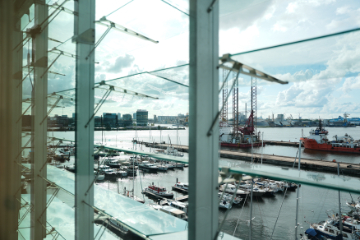Table of Contents

Conservatory attachment (“conservatoir beslag”) is a powerful preventive tool under Dutch law. It allows creditors to temporarily block a debtor’s assets before a court judgment. In other words, it helps them maintain control over possible recovery assets. Consequently, the creditor places a legal ‘lock’ on the debtor’s possessions, stopping them from moving assets out of reach. Therefore, this article outlines the legal basis and conditions under the Dutch Code of Civil Procedure (Rv), the steps in the attachment procedure, the risks and costs, possible counterarguments, strategic considerations, and recent case law in the Netherlands.
Legal Grounds and Conditions for Attachment in the Netherlands
The regulation of conservatory attachment starts at Article 700 Rv. It states:
- Permission from the preliminary relief judge (voorzieningenrechter) is required. This must be from the court in the district where the goods are located or where the debtor or the third party resides in the Netherlands.
- The request must include the nature of the attachment, the claimed right, and—if monetary—the claimed or maximum amount. The judge examines the request briefly and may grant permission, including possible legal costs. In addition, the judge may also allow the attachment on any day or time. No appeal is possible.
- If no case on the merits is pending, permission is conditional on starting such a case within at least eight days after the attachment. The judge may extend this period. Otherwise, late filing voids the attachment.
- For institutions under Article 212a(a) of the Bankruptcy Act, the court must hear the institution unless the attachment only concerns goods.
Only with court permission may the creditor proceed. The Dutch lawyer submits a petition outlining the claim and the need for urgent security. Subsequently, the judge assesses whether the claim is plausible and fixes the attachable amount.
The creditor must present all facts truthfully (Article 21 Rv). For attachments on registered property, there must be a well-founded fear of misappropriation. Since 2020, disproportionate attachments are disallowed. Notably, judges now test proportionality in over 35% of cases, stressing the need for clear reasoning.
How to Obtain Leave for Attachment in the Netherlands?
The procedure has two phases:
- The Dutch attorney files the petition.
- The judge decides—usually within 24–48 hours—often without hearing the debtor.
Afterward, the creditor engages a bailiff who enforces the attachment and notifies the debtor.
Assets that may be attached include bank accounts, shares, movable property, and real estate in the Netherlands. From that point, the debtor loses free control over the assets.
To keep the attachment valid, the creditor must start main proceedings (usually within 14 days). Otherwise, the attachment expires. If the claim succeeds, the conservatory attachment becomes enforceable.
Risks for the Creditor under Dutch Law
This legal tool comes with risks. If the main claim fails, the attachment is wrongful. As a result, the creditor might then owe damages, which can be significant. Losses may include blocked accounts, reputational harm, or missed revenue. In about 12% of cases, debtors seek compensation in the Netherlands.
The Supreme Court (HR 15 April 1965, Snel/Ter Steege) held that judicial permission doesn’t shield the creditor from liability. This has been consistently upheld. Accordingly, law firms in the Netherlands should warn clients of the potential downsides.
Like a non-disclosure agreement (NDA), conservatory attachment offers early-stage protection. However, if poorly justified, it can become a liability.
Attachment Costs in the Netherlands
The creditor must prepay costs, including:
- Court fees (€714 in 2025 for legal entities);
- Bailiff costs (€200–€800 per action);
- Legal fees.
If successful, the creditor can reclaim these from the debtor. If not, the creditor bears the cost. A cost order may also apply. Therefore, clear financial planning with the client is essential.
Defences Against Attachment in the Netherlands
The debtor can challenge the attachment in summary proceedings (“opheffingskortgeding”). The judge will lift the attachment if:
- there are procedural errors;
- the claim is unfounded;
- the attachment is excessive;
- the debtor offers security (e.g., bank guarantee).
Roughly 28% of attachments are fully or partly overturned, often due to lack of justification or excessive scope. Thus, a reasoned and proportionate approach is crucial.
Tips for Dutch Lawyers
- Investigate recovery options: Know what assets to target and why.
- Draft thoroughly: Include all facts and counterarguments in the petition.
- Act quickly: Coordinate bailiff actions for maximum effect.
- Respect deadlines: Prepare the main case while requesting permission.
- Gather evidence: Expect resistance; build a strong file.
- Discuss alternatives: A mortgage or bank guarantee might be safer.
Recent Case Law in the Netherlands (2023–2024)
- HR 15 July 2022 (ECLI:NL:HR:2022:1110): No automatic liability when third-party assets are attached.
- HR 22 December 2023 & 8 March 2024: Damages for wrongful attachment may require separate assessment.
- Stricter review: Courts now demand detailed substantiation.
- Forthcoming law: A protected minimum balance for bank account attachment will likely be introduced in 2025, like the protected wage level in the Netherlands.
Law Firm in Amsterdam Specialised in Conservatory Attachment
Conservatory attachment in the Netherlands is a precise legal instrument. Its strength lies in lawful use, proportionality, and good timing. Preparation avoids surprises. Strategic foresight is the best defence.
Enforcing or lifting attachments and executing judgments requires expert guidance. Otherwise, errors can cause delay or damage. Our Attachment & Enforcement Law Team, part of our law firm in Amsterdam, is ready to assist. Whether you aim to secure assets, contest an attachment, or enforce a judgment, our experienced Dutch attorneys can help.
+31 (0)20 – 210 31 38
mail@maakadvocaten.nl
This information is not legal advice. For personalised guidance, please contact our law firm in the Netherlands.

